
Lesson about A.A. Milne for Elementary Librarians or Classroom Teachers
- Subject:
- Elementary English Language Arts
- Literature
- Other
- Social Studies
- Material Type:
- Lesson
- Author:
- Sharyn Manley
- Date Added:
- 02/07/2024

Lesson about A.A. Milne for Elementary Librarians or Classroom Teachers
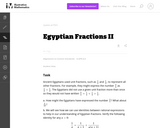
This is a task from the Illustrative Mathematics website that is one part of a complete illustration of the standard to which it is aligned. Each task has at least one solution and some commentary that addresses important asects of the task and its potential use. Here are the first few lines of the commentary for this task: Ancient Egyptians used unit fractions, such as $\frac{1}{2}$ and $\frac{1}{3}$, to represent all other fractions. For example, they might express the n...

The AASL Standards framework reflects a comprehensive approach to teaching and learning by demonstrating the connection between learner, librarian, and library standards. Each section of the standards framework was designed to reflect the others, ensuring that standards-related activities would be mutually reinforcing, simultaneously building capacity among learners, school librarians, and the school library. This pamphlet provides educators access specifically to AASL’s learner standards.

The AASL Standards framework reflects a comprehensive approach to teaching and learning by demonstrating the connection between learner, librarian, and library standards. Each section of the standards framework was designed to reflect the others, ensuring that standards-related activities would be mutually reinforcing, simultaneously building capacity among learners, school librarians, and the school library. This pamphlet provides educators access specifically to AASL’s librarian standards.
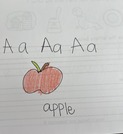
In this lesson I will introduce 3 different I-pad apps to my class.l In the end we will have created an A-Z book together as a class using all three apps. This lesson will take about 3-4 days depending on class size and time spent during the day working on this lesson. This lesson will be done face-to-face in a whole class setting.This lesson is created by me, Brianne Anderson.

This is a task from the Illustrative Mathematics website that is one part of a complete illustration of the standard to which it is aligned. Each task has at least one solution and some commentary that addresses important asects of the task and its potential use. Here are the first few lines of the commentary for this task: When Marcus started high school, his grandmother opened a college savings account. On the first day of each school year she deposited money into the ac...

The given solutions for this task involve the creation and solving of a system of two equations and two unknowns, with the caveat that the context of the problem implies that we are interested only in non-negative integer solutions. Indeed, in the first solution, we must also restrict our attention to the case that one of the variables is further even.
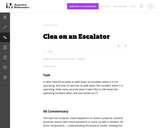
This is a task from the Illustrative Mathematics website that is one part of a complete illustration of the standard to which it is aligned. Each task has at least one solution and some commentary that addresses important asects of the task and its potential use. Here are the first few lines of the commentary for this task: It takes Clea 60 seconds to walk down an escalator when it is not operating, and only 24 seconds to walk down the escalator when it is operating. How m...

This is a task from the Illustrative Mathematics website that is one part of a complete illustration of the standard to which it is aligned. Each task has at least one solution and some commentary that addresses important asects of the task and its potential use. Here are the first few lines of the commentary for this task: Sara's doctor tells her she needs between 400 and 800 milligrams of folate per day, with part coming from her diet and part coming from a multi-vitamin...
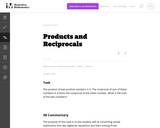
This is a task from the Illustrative Mathematics website that is one part of a complete illustration of the standard to which it is aligned. Each task has at least one solution and some commentary that addresses important asects of the task and its potential use. Here are the first few lines of the commentary for this task: The product of two positive numbers is 9. The reciprocal of one of these numbers is 4 times the reciprocal of the other number. What is the sum of the ...
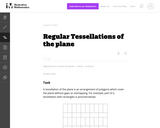
This task examines the ways in which the plane can be covered by regular polygons in a very strict arrangement called a regular tessellation. These tessellations are studied here using algebra, which enters the picture via the formula for the measure of the interior angles of a regular polygon (which should therefore be introduced or reviewed before beginning the task). The goal of the task is to use algebra in order to understand which tessellations of the plane with regular polygons are possible.
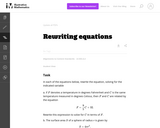
This is a task from the Illustrative Mathematics website that is one part of a complete illustration of the standard to which it is aligned. Each task has at least one solution and some commentary that addresses important asects of the task and its potential use. Here are the first few lines of the commentary for this task: In each of the equations below, rewrite the equation, solving for the indicated variable If $F$ denotes a temperature in degrees Fahrenheit and $C$ is ...
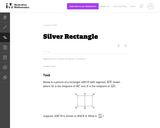
This is a task from the Illustrative Mathematics website that is one part of a complete illustration of the standard to which it is aligned. Each task has at least one solution and some commentary that addresses important asects of the task and its potential use. Here are the first few lines of the commentary for this task: Below is a picture of a rectangle $ABCD$ with segment $\overline{MN}$ drawn where $M$ is the midpoint of $\overline{BC}$ and $N$ is the midpoint of $\o...
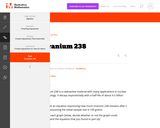
This is a task from the Illustrative Mathematics website that is one part of a complete illustration of the standard to which it is aligned. Each task has at least one solution and some commentary that addresses important aspects of the task and its potential use.

Educator Resources
ACTFL strives to ensure that world language educators at all levels have the tools they need to succeed

ACTFL Performance Descriptors for Language Learners
A roadmap for what learners should be able to do as they learn a language

Interpersonal Mode - "ACTFL Performance Descriptors for Language Learners
A roadmap for what learners should be able to do as they learn a language"

Interpretive Mode - "ACTFL Performance Descriptors for Language Learners. A roadmap for what learners should be able to do as they learn a language".

Presentational Mode - "ACTFL Performance Descriptors for Language Learners
A roadmap for what learners should be able to do as they learn a language"

The ACTFL Proficiency Guidelines 2012 are a description of what individuals can do with language in terms of speaking, writing, listening, and reading in real-world situations in a spontaneous and non-rehearsed context.